The Manila-Hong Kong route is one of the busiest at Ninoy Aquino International Airport (IATA code: MNL), and Cathay Pacific (IATA code: CX) carries a good chunk of the premium-passenger traffic between the two cities. Today, we’ll see what it’s like to travel in Business Class on this short but important transport link – and at the same time, we’ll experience CX’s latest-generation cabin interior aboard one of the airline’s newest aeroplanes.
Welcome aboard Cathay Pacific flight CX 934.
Note: The details presented here are only for the specific flight reviewed. This information might not hold true for previous or future flights, even if operated by the same airline on the same route and/or under the same flight number.
For the sake of brevity, IATA airline and airport codes have been used throughout this report in place of full names (e.g., “CX” instead of “Cathay Pacific”; “MNL” instead of “Ninoy Aquino International Airport”).
This review covers the first segment (MNL-HKG) of the outbound leg of a round-trip MNL-ICN-MNL journey, where HKG was the transit point on both legs. Please click on the embedded links to read my reviews of the second (HKG-ICN) and third (ICN-HKG) flights. A separate review of the final segment (HKG-MNL) will be published in due course.
ROUTE MAP
OVERVIEW
Note: All times are local. There is no time difference between Manila and Hong Kong (both GMT+8).
Flight details
Airline and flight number : Cathay Pacific (CX) 934
Route : Manila, Philippines (IATA code: MNL) to Hong Kong, China (IATA code: HKG)
Final destination : Seoul-Incheon, South Korea (IATA code: ICN)
Route type : International
Date : Wednesday, 22 January 2020
Scheduled departure time : 20:35
Actual departure time : 21:21
Scheduled arrival time : 23:05
Actual arrival time : 23:07
Equipment and cabin
Aircraft : Airbus A350-1000
Manufacturer : Airbus
Registration number : B-LXC
Passenger capacity : 46 Business, 32 Premium Economy, 256 Economy (334 total)
Cabin configuration (seat maps) : Official Site
Travel class flown : Business Class
I don’t have an exterior photograph of B-LXC, but here’s a virtually identical Airbus A350-1000 parked on the tarmac at HKG. This particular aeroplane is B-LXF.
B-LXC was delivered in July 2018, making it less than 2 years old when I walked aboard for flight CX 934. As we’ll see later in this report, the aeroplane was fitted with CX’s latest-generation long-haul Business Class product.
Even though the MNL-HKG route is quite short – about 2.5 hours on paper, and in reality even less than that – CX frequently rotates its long-haul aircraft into this corridor (as it also does on its Asian regional routes). In fact, my original booking had me in long-haul cabins for 2 flights out of 4, and a change for the return leg bumped the tally up to 3 of 4. Needless to say, CX’s long-haul Business Class seats are far superior to its equivalent regional product, so experiencing them on these relatively brief flights really added a bit of kick and spice to my holiday (nearly rivalling the fun I had on the ground in Korea, haha).
BAGGAGE
CX’s baggage allowances depend chiefly on your travel class, but there are also different rules for specific routes. Limits on dimensions and piece weight must also be adhered to; for example, no single bag can weigh over 32 kg (70 lb) no matter what allowance you’re entitled to. For detailed terms, refer to the fine print on your ticket and to the details published on CX’s official website.
My Business Class ticket came with a complimentary checked baggage allowance of two pieces totalling 40 kg (88 lb). I was also permitted to bring one piece of cabin baggage and the usual small item on board, weighing no more than 10 kg (22 lb) all together.
At MNL, the check-in agent tagged my luggage all the way through to my final destination (ICN). She also attached a Business Class priority label before sending the bag on its way. In the end, the priority label wasn’t of much use as ICN’s infamously long immigration queues kept me airside for a considerable period. By the time I arrived at the baggage carousel, it seemed that much of the aeroplane’s load – regardless of travel class – was already on the belt and awaiting reclaim.
AT THE AIRPORT
Origin
CX flights out of Manila are based at Terminal 3 (T3) of Ninoy Aquino International Airport (IATA code: MNL).
Further details regarding MNL T3 are available in a separate Airport Guide covering that terminal.
Check-in
At the time of my flight, CX’s counters were located near the southern end of the check-in hall. (Note that counter assignments may change without prior notice.) A staff member checked my flight ticket before letting me enter the enclosure.
Separate lanes were provided for Business Class and high-tier frequent flyers, Premium Economy Class, and Economy Class. (The Premium Economy lanes were also marked as “bag drop” counters, so I presume that passengers who had already checked in online could use them regardless of travel class.)
The signs indicated that the flight before mine (CX 902) was still being processed, but the counter staff had no issue checking me in for CX 934. In fact, she offered to check me onto the earlier flight if I so wished. I declined, preferring to stick with CX 934 since it was on a new A350 (as opposed to the older B777 assigned to CX 902); nonetheless I did appreciate the offer and I can imagine myself accepting under different circumstances.
I was issued two boarding passes at MNL: one for my initial MNL-HKG leg on CX 934, and another for my succeeding HKG-ICN leg on CX 438. I was also given two lounge invitations, the first for MNL (at the Cathay Pacific Lounge on Level 4) and the second for my transit in HKG (valid at all four CX Business Class lounges there).
Lounge
CX operates its own lounge at MNL T3. Read more about this facility in my separate Lounge Report.
Boarding
At the departure gate, I saw that CX had cordoned off the seats closest to the counter. These were reserved for the exclusive use of passengers entitled to priority boarding, including those with Business Class tickets. A staff member manning the entrance to this section inspected my boarding pass before allowing me through.
With this buffer zone in place – and a retractable belt barrier keeping most of the passengers at bay – the announced boarding sequence was more easily enforced. Although I didn’t see it happen (since I was one of the first through the gate), I presume the barrier would only have been lowered once the priority area had been emptied of waiting passengers.
As I approached the end of the gate corridor, I assumed that I’d be using the forward aerobridge (with Premium Economy and Economy passengers entering via the aft aerobridge). As it turned out, the forward aerobridge was out of service and only the one further aft was in use. This connected to the aircraft’s second door, just ahead of Premium Economy, so the cabin attendant who checked my boarding pass invited me to turn left into the Business cabin.
ONBOARD EXPERIENCE
Cabin interior and seating
The spacious Business Class cabin in CX’s A350-1000 occupies the entire section between the forward and second doors. 11 rows in a 1-2-1 configuration (numbered as rows 12-23), plus 1 row of 2 middle seats at the front (numbered as row 11), for a total of 46 seats.
CX’s previous generation of long-haul Business Class seat left a very good impression on me a few years ago. It was with more than a little excitement that I popped into my assigned space and came face-to-face with its successor.
Well well well. Colour me impressed.
Both old and new generations of CX’s long-haul Business Class cabin employ a reverse herringbone layout, where the seats along the edges of the cabin are angled towards the windows. This arrangement – working in tandem with the shell that wraps around the back – offers a remarkable degree of privacy from the aisle and nearby seats. For someone like myself, a not particularly sociable chap who doesn’t want to see (or be seen by) other people, it’s the next best thing to a completely private room.
There’s plenty of legroom, as one might expect…
…and all that space coalesces into a comfortable bed when the seat is switched over to its lie-flat position. I don’t have pictures of my seat all stretched out, but I can tell you that it felt very roomy from head to toe.
Under the side table (beneath the windows) is a cushioned ledge…
…that flips open to reveal a storage bin. I kept my shoulder bag in there for almost the entire flight, within easy reach and securely tucked away. (Of course, with the lid down and the seat stretched flat, the padded surface becomes part of your spacious in-flight bed.)
There’s also a small compartment next to the side table, over by the windows…
…which conceals even more storage space, along with a small mirror (behind a sliding cover) and a hook holding the supplied headphones (more on those later). The compartment also has a full-sized power point and a USB port.
Mine was a short flight so that’s all I found in there, but I believe CX would also stash an amenity kit and bottled mineral water in the compartment ahead of a long-haul service.
The dining table is berthed in a slot under the side table. Swung out, it then needs to be unfolded to reveal its full size.
Down on the aisle-facing edge of the seat are two extra conveniences, although their purpose isn’t evident when locked into their default take-off or landing position.
The outer one, covered in leather or leather-like material, is the right armrest (or left armrest depending on the seat position). When raised, it offers not just arm support but also a touch of extra privacy whilst one is lying down and stretched out for sleeping. There’s also what appears to be a bottle holder under there, accessible only when the armrest is deployed.
The inner one, covered in the same upholstery fabric as the seat, is a surface extension that folds up and out when the switch is triggered. This is on the same level as the seat at lie-flat position, thereby providing a little extra space along the side and making the “bed” feel even more spacious.
We’ll have more to say about the IFE screen and controller later on. The tethered controller is berthed in the same instrument panel as the reading light and seat recline switches.
The hard-walled seat pocket is located near the floor, by the aisle. Whilst less convenient for storage purposes, the seat pocket isn’t really needed in this type of berth, given all the extra places (specifically the side and foot-well cabinets) where one might keep small articles.
You’ll also find a coat hook higher up, on the aisle-side wall of the seat.
Now then, let’s sneak a peek at the middle seats next to mine (to see things from a different perspective).
With time to kill between boarding and take-off, I wandered forward and popped into one of the lavatories. Standard-issue equipment, for the most part … except for the window above the loo.
Right, so much for the hardware. Time to have a look at the soft product.
In-flight service and amenities
Thanks to priority boarding, those of us in Business Class had time to settle in whilst the rest of the plane was being loaded. This also gave the cabin crew a chance to start service.
Choice of welcome drink, presented on a tray. Juice and water were available, but I wanted that extra hint of luxury and picked up a glass of champagne.
There was a pillow propped up on the seat ahead of boarding. The blanket was offered separately as part of the initial round of service.
The cabin crew also went around offering hot towels and landing forms for Hong Kong. I accepted the former (ahh, refreshing!) but declined the latter, as I was merely transiting at HKG en route to ICN.
I’d placed my jacket on the coat hook by my seat, and one of the cabin attendants offered to hang it in the closet for me. I was distracted at the time – probably examining the seat in forensic detail for this review, haha – and mumbled a gentle refusal. Had I accepted, she would have asked if I had any valuables to remove before carrying the jacket away (with my boarding pass tucked into a pocket to identify my seat). It would then have been returned to me shortly before landing.
Menus were also handed out at this point, giving us time to peruse and choose … as well as distracting us from the slight ground delay. We’ll take a closer look at the catering later on.
Incidentally, during all this time I was regularly addressed by name, as is customary in Business Class. Though not a sociable chap, I still felt that this added a nice, personal element to the in-flight experience.
Just to start winding this section down – and, in a broad sense, carrying on the discussion about in-flight amenities – let’s have a peek at the seat pocket contents.
The “consumable” (or at least less-permanent) components – consisting of the in-flight magazine, duty-free catalogue, in-flight entertainment guide, and air sickness bag – are all neatly tucked into a clear plastic wrapper. Doubtless this makes them easier to pull out, check (if used), and replace as needed than if they were jostling for space in that seat pocket as separate items. The safety briefing card and onboard WiFi instruction sheet are both laminated in plastic, which should help keep them in good shape for longer (since they’re not in need of as frequent replacement as, say, the magazine which gets a new issue regularly).
To close things off here, let’s take a look at the sheet that gives details about the onboard WiFi and connectivity features. This is available on CX’s newer (or newly-refitted) aircraft, and might be of use to passengers who need to stay in contact whilst in the air. Note that the service is not complimentary and voice calls are prohibited.
Catering
Right, the moment we’ve all been waiting for: the in-flight meal. 🙂
Let’s flip through the menu and see what’s on offer.
And here we are. All courses on CX 934 were served at about the same time and accumulated together on the tray, with brief gaps for bringing out the main course and offering a selection of bread to choose from. This was an interesting contrast to the meal services on my longer HKG-ICN and ICN-HKG flights later, where each element was brought out in a measured sequence and the previous course’s empty dish would be cleared away to make room for the one to follow.
The menu offered a choice between a beef and salmon dish. I chose the former, described in full by CX as follows:
Stir fried beef tenderloin, black pepper sauce, pak choy, carrot and steamed jasmine rice
The side greens were a disappointment, although that’s mainly because I’m not a fan of pak choy (rather than any issue with preparation). The beef, on the other hand, easily won my approval. Robustly seasoned and nicely cooked, with the pronounced flavours of both meat and sauce working beautifully with the moderating influence of the jasmine rice.
Let’s have a look at the starter and dessert.
Mm, not bad I suppose, but could have been better. The cake in particular was somewhat dry and lacking in taste. I would have preferred something moist and dense and packed with flavour; even a nice soft brownie or a chunk of rich fudge would have done a better job.
The drinks list was extensive (as shown above), but it was getting late and neither coffee nor alcohol seemed to fit the bill. A glass of tonic water was all that I needed.
One very minor but interesting observation. The pat of butter for my bread was served in a small ceramic dish and covered with a protective paper disc bearing the CX logo.
No supermarket-grade plastic packet with foil cover? Yep, we’re definitely in Business Class here. 😉
In-flight entertainment
I’m not one to demand a full IFE suite on a regional flight … but I’m not one to refuse it either.
And CX’s wide selection of movies, television shows and other media was certainly a nice-to-have perk even on the short MNL-HKG route.
You can choose to take control indirectly via the touchscreen handset next to your seat, or directly by tapping options on the responsive – and quite generously sized – flat-screen monitor in front of you.
There wasn’t enough time for a long movie on this brief hop, but I nonetheless put on the supplied headphones…
…and resolved to watch at least some small portion of The Lord of the Rings: The Fellowship of the Ring.
Warm, fuzzy moment of nostalgia, this: not merely because of the film’s status as a contemporary classic, but also because it called to mind the time when I watched another LotR film on one of my first CX Business Class flights a few years back (although it was The Hobbit on that occasion).
OVERALL IMPRESSION
Short the MNL-HKG run might be, but CX’s occasional deployment of long-haul aircraft on this route is a great opportunity for travellers to have a taste – no matter how faint and fleeting – of the airline’s long-distance onboard product. This is especially true in the forward cabin, where the latest version of its Business Class hardware makes for a uniquely comfortable airborne experience.
That, coupled with CX’s professional in-flight service and curated catering, helped elevate this brief first leg from a mere A-to-B hop into a rousing start to my holiday. Korea was the main setting for this journey, true enough; yet I felt like the whole adventure began not from the moment I landed near Seoul, but even before I took off from Manila.
Though I shall probably continue to fly with LCCs – or with full-service airlines but in Economy Class – for nearly all of my future journeys, the occasional treat to an upgraded in-flight experience is something that I’ll always look forward to…
…and even more so if CX is to be my chosen carrier.
A toast to Cathay Pacific for a job well done.
Cheerio.


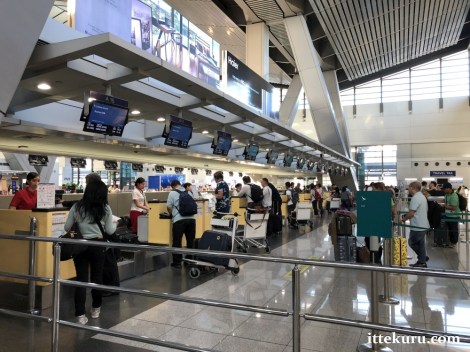



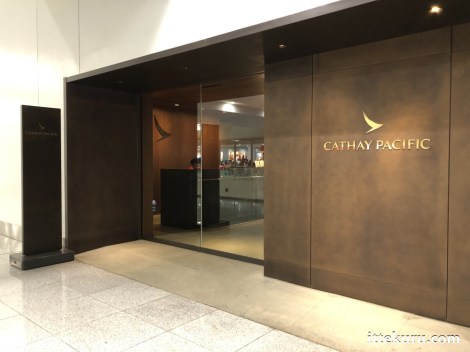












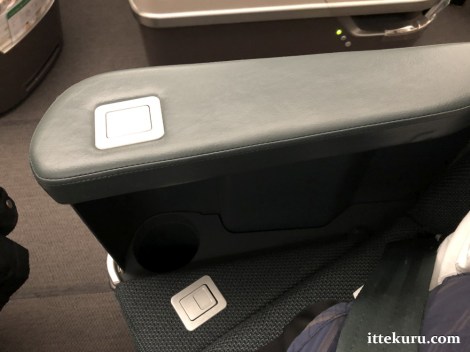














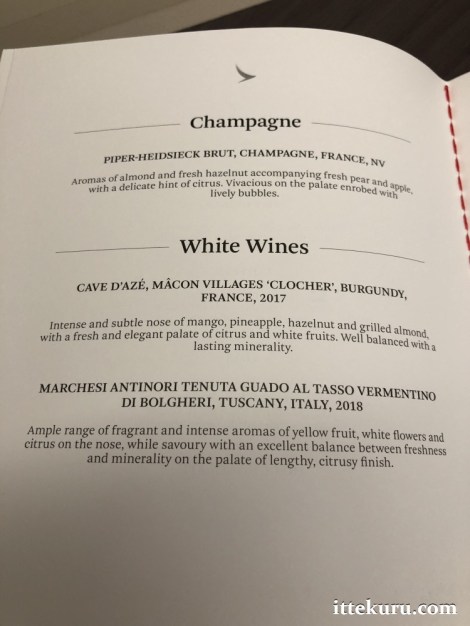

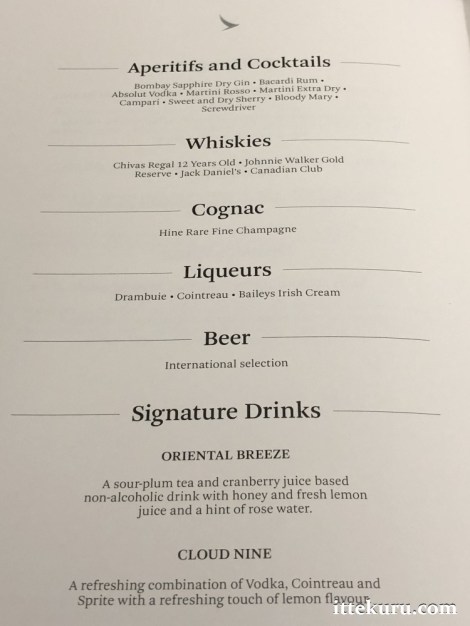






Pingback: Lounge Report: Cathay Pacific Lounge, NAIA Terminal 3 (MNL T3) | Within striking distance·
Pingback: Terminal Report: Overnight Transit at Hong Kong International Airport (22-23 January 2020) | Within striking distance·
Pingback: Flight Report: HKG-ICN on Cathay Pacific Flight CX 438 (23 January 2020) | Within striking distance·
Pingback: Flight Report: ICN-HKG on Cathay Pacific Flight CX 417 (28 January 2020) | Within striking distance·
Pingback: Flight Report: HKG-MNL on Cathay Pacific Flight CX 919 (28 January 2020) | Within striking distance·